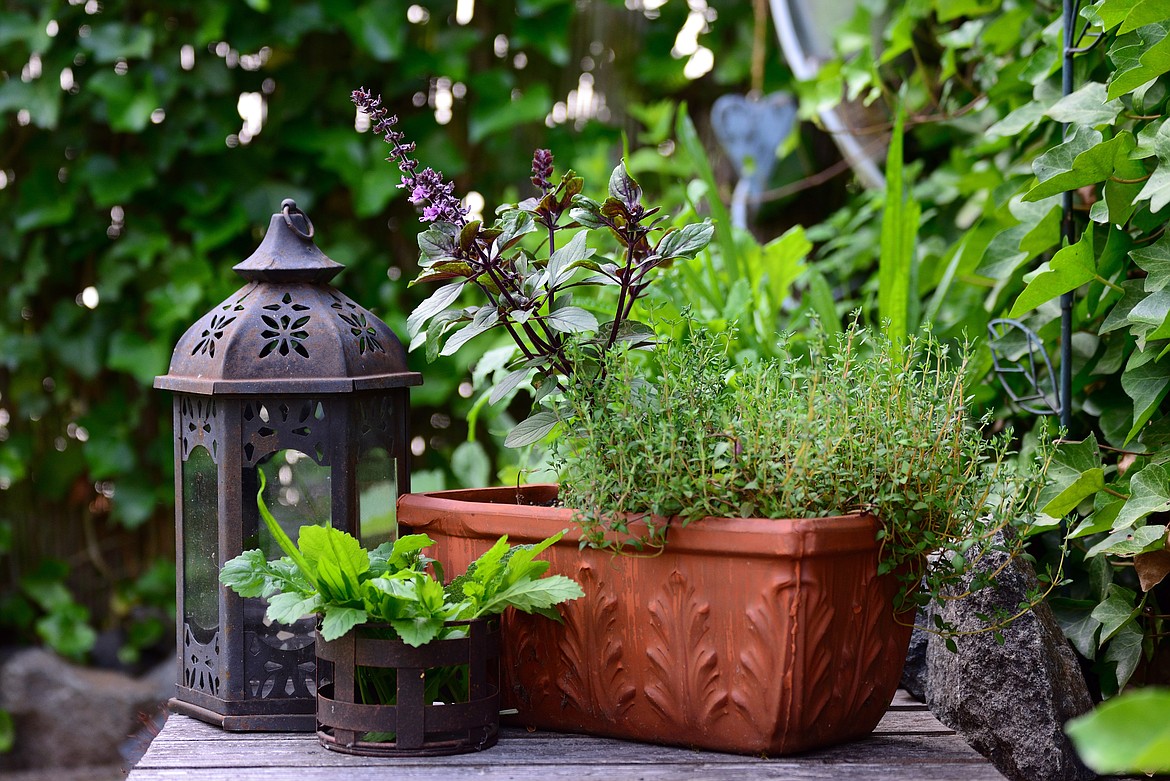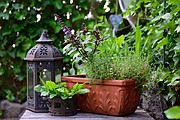French Country Garden dazzles with edible beauty
VALLE NOVAK Contributing Writer | Bonner County Daily Bee | UPDATED 3 years, 10 months AGO
The French seem to do most everything with consummate style — including gardening. Several years ago I wrote a column on the “French Country Garden”, also often referred to as a potager,” and upon rediscovery, decided to tweak it a bit and run it again today. It’s a wonderful possibility for this spring – especially after such a hellacious winter. Enjoy!
There actually seems to be no design, no perceived plan — just a great glorious hodgepodge of color, leaf, flower, fruit, herb and vegetable. For example, A great, purple-leaved cabbage may hold forth as ornament next to a grouping of Stargazer lilies, pink Oriental poppies and bright blue delphiniums! Quite unabashed about its humble stature, its ultimate role as star at the dinner table makes it a valued garden companion, and when its head is twisted off, the lovely outer leaves remain to continue providing drama and color to the grouping.
Whether you use a series of small beds, containers or one area, every aspect is utilized with unique charm. Casual is the keyword. Let squash or cucumbers ramble through and among fruits and veggies, providing food and ornament. One can pop a red cherry or yellow pear tomato into one's mouth while exploring such a garden. Picture a pot planted with the little beauties placed on a fencepost surrounded by golden Marguerites and bright hollyhocks! Charmante!
Now, while the basic potager (pot-a-jhay) includes edibles as a matter of course, this does not have to make it the main vegetable garden. There can be one, of course, laid out lush and orderly, much like an American veggie garden. But the treasure garden still remains to be discovered: the potager. While the big garden is for harvesting and putting by, the potager is for daily eating. It contains the special plants — maybe only one or two of a kind selected for beauty and tastefulness and herbs galore with which to enhance their flavors at table: Flowers for cutting, certainly, with some chosen for companion/pest protection and others for their edible petals, i.e. chive blossoms, pansies, nasturtiums, calendula and more.
The potager is the garden where, late in the afternoon, the chef of the house selects the supper items: three or four small courgettes (summer squash) for quick sauté with butter and a head of dill, perhaps; a couple of bell peppers to slice onto a relish tray with some tiny tomatoes and crusty bread slices with pats of fresh butter. According to season, there could be a handful of fresh green beans, tiny new peas and potatoes to share a cream sauce, or perhaps fresh asparagus quickly steamed and drizzled with lemon juice. All super-fresh to provide the nicest of all-veggie suppers or to join with seared scallops or a chicken breast.
Let’s explore the delights of the French potager — that little gem of a cook's garden designed both for pleasure and daily eating of the fresh-picked produce. Since this is for fresh use, plant what you really like, saving the freezing-canning-putting by veggies for the "big" garden. You won't need large quantities here, just a few plants of bush-style edibles, clumps of herbs and flowers for picking (and/or eating), with edible borders of parsley, alpine strawberries, Johnny jump-ups, and culinary thyme.
Here are some possibilities: 1 big culinary sage; 1 rhubarb; four or five cabbages (including purple); 3 broccoli and/or cauliflower; 1 3-foot round or square plot interplanted with white turnips (to be picked tiny) and red-leaved beets (ditto); 1 3-foot round or square plot of rainbow chard interplanted with scallions; 1 3-foot round or square plot of a variety of lettuces and mesclun; 1 3-foot round or square of mixed carrots (planted around a clump or pot of dill if you wish); 2 or 3 tomato plants (on fence posts or on hanging posts to grow upside down as you choose); 2 bushes each (if you like them) of bell or hot peppers, Japanese eggplant —to be containerized if you wish; 2 bushes each of green, yellow and pattypan summer squash (to be picked tiny); 2 vines only of green filet, purple pod, yellow wax pole beans and/or sweet peas (on a trellis or up a wall) OR bush varieties. Include clumps (2-3 plants together) of purple chives, Welsh onions (white flowered garlic chives), dill, fennel,(including 1 bronze,(best in a container), flowers such as hollyhocks, cosmos, marguerites, etc. (tall for show and cutting), and sunflowers to leave overwinter for the birds; include large pots of perennial herbs like mints and tarragon. Don't forget fruits: 1 or 2 Dwarf-style blueberries (container if you wish); 3-5 canes only of raspberries (red or yellow); a currant bush (maybe 1 each of black and red). Perhaps you'll plan your potager around an existing apple, pear, plum or cherry tree: great!
And when it's all in bloom, the purples, yellows, reds and greens intermingled in lavish array provide the true meaning of Potager Orne — ornamental kitchen garden.
Water should be close at hand for easy individual watering as necessary. Drip hoses laid in place are best, but a wand, used properly, is perfectly acceptable. A bench and bucket to fill, rinse new-picked veggies and carry them inside is a bonus. Just as a bonus, if there's room, a birdbath or fountain feature could be a lovely accoutrement.
Choose your favorites from among these suggestions for a fabulous seasonal gardening/eating experience: When the turnips and peas are through, the chard will be ready; then baby carrots, beets, and summer squashes (to braise whole on the grill with a sprig of fennel); next, green beans will join the little tomatoes, and always there will be herbs to flavor, lettuces/mesclun, parsley, chives and their blossoms for salads, and by midsummer, fresh raspberries and strawberries to serve with brown sugar and clotted cream!
The idea, you know, is to have the garden empty by late fall, since you'll have eaten it all! Next year, the perennial plants and herbs will provide your start for your new garden, planted in accordance with what you did (and didn't) like, and of course, rotating the crops.
A last word: You can create a potager on a tiny plot of ground, as mentioned here, as a series of planters and containers grouped on a sunny patio, or in pots marching down steps or stairs. Be creative! (I propped an old trundle-bed spring against the wall for my climbing beans and peas, later replacing them with a native blue clematis). Let a fun spring garden-planning experience makeup for this nasty, vindictive winter. (Not counting the blessings of Schweitzer, of course!)
Valle Novak writes the Country Chef and Weekend Gardener columns for the Daily Bee. She can be reached at [email protected] or by phone at 208-265-4688 between the hours of 8 a.m. to 7 p.m.





